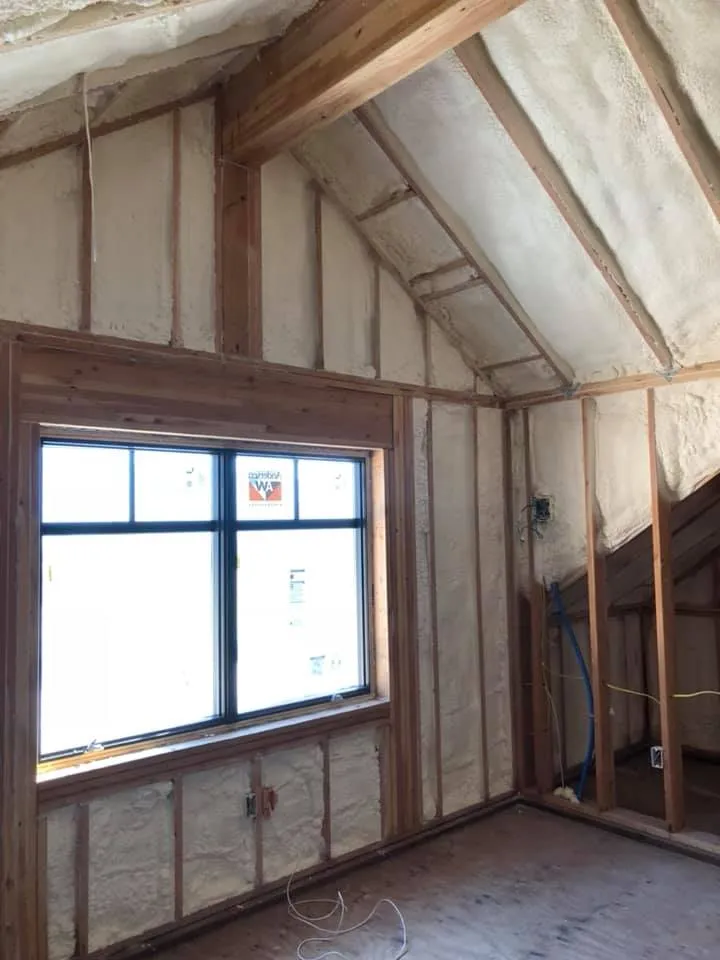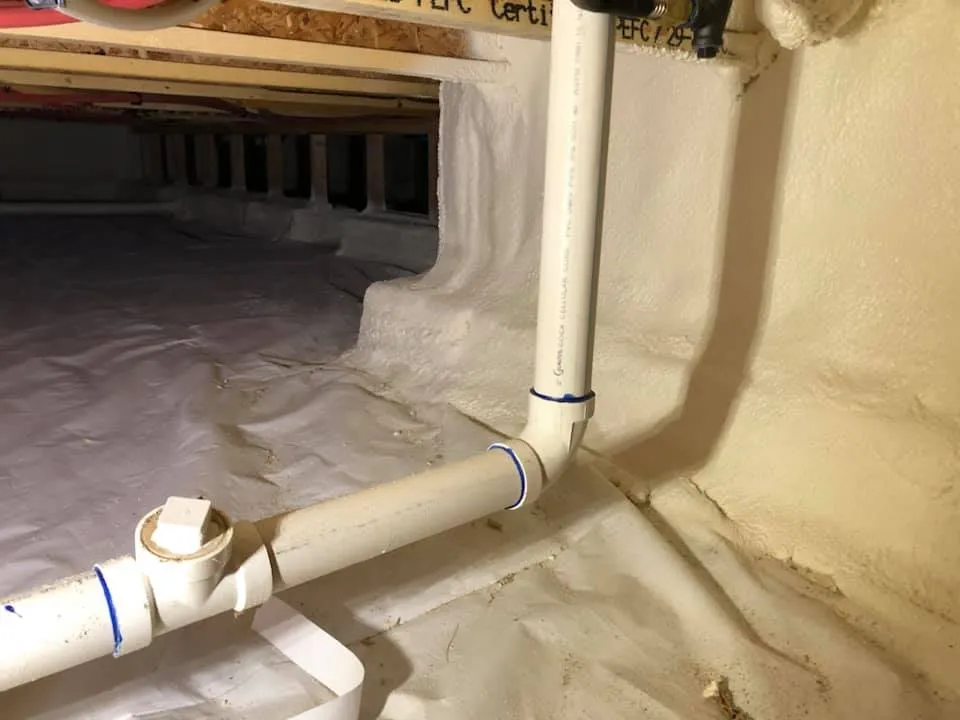
Yes, spray foam insulation can significantly cut down on the amount of dust, pollen, and other airborne allergens inside your home. It achieves this by creating a powerful air barrier. Unlike traditional insulation materials that have seams and gaps, spray foam expands to fill every crack and crevice in walls and ceilings. This airtight seal stops the uncontrolled flow of outside air, which is a primary carrier of dust, pollen, and pollutants, into the living space.
By minimizing air leakage, spray foam directly addresses a major source of indoor air contaminants. This makes it a highly effective solution for improving overall indoor air quality, especially for households with occupants who suffer from allergies or asthma. This article will explain exactly how spray foam works to block these irritants, what to consider before installation, and how it compares to other insulation methods. With years of experience in building science and insulation application, Nevada Urethane has seen firsthand how a properly sealed building envelope improves the health and comfort of a home.
The primary function that allows spray foam to reduce dust and pollen is its ability to act as both insulation and an air sealant in one application. When the liquid components of spray polyurethane foam (SPF) are mixed, they react and expand up to 100 times their original volume. This expansion is key. The foam flows into every opening, no matter how small, and then hardens into a solid, continuous barrier.
This process eliminates the tiny air pathways found in a home’s structure, such as those around plumbing, electrical wiring, and window frames. According to the U.S. Department of Energy, these small leaks can add up to the equivalent of leaving a window open all year round. By sealing these entry points, spray foam stops airborne particles at the source.
There are two main types of spray foam, each with different properties:
Both types are effective at stopping air movement, which is the main transport for dust and pollen.
Improving a home’s building envelope has a direct effect on indoor air quality. The U.S. Environmental Protection Agency (EPA) reports that indoor levels of pollutants can be two to five times higher than outdoor levels. A significant portion of these indoor pollutants comes from outside.
By creating an effective air seal, spray foam helps manage the indoor environment. It prevents pollen from drifting in during spring, dust from construction sites from entering, and other pollutants from infiltrating the home through the building structure. This leads to a cleaner indoor environment and can reduce the burden on the home’s HVAC system and air filters, as they have fewer particles to capture.
In a climate like Nevada’s, characterized by dry, dusty conditions and seasonal winds, creating an air seal is particularly beneficial. During windy periods, a poorly sealed home can accumulate a surprising amount of fine dust and allergens. Spray foam provides a durable defense against this infiltration, helping to keep indoor air cleaner regardless of the weather outside.
Bonus Tip: An airtight home needs proper ventilation. When you seal a home’s envelope with spray foam, it’s a good practice to ensure the HVAC system is set up for mechanical ventilation, such as with an Energy Recovery Ventilator (ERV). This allows you to bring in fresh, filtered air in a controlled manner, rather than letting unfiltered air leak in randomly.
Not all insulation materials offer the same level of air sealing. Traditional materials like fiberglass batts and blown-in cellulose are good at slowing heat transfer, but they don’t stop airflow. According to building science experts at Green Building Advisor, the gaps between batts and around structural framing create pathways for air and the particles it carries.
| Insulation Type | Thermal Resistance (R-Value) | Air Barrier Capability | Pollen & Dust Infiltration Risk |
|---|---|---|---|
| Fiberglass Batts | R-3.1 to R-4.3 per inch | Low (Gaps are common) | High |
| Cellulose (Blown-in) | R-3.2 to R-3.8 per inch | Moderate (Settles over time) | Moderate to High |
| Open-Cell Spray Foam | R-3.5 to R-3.8 per inch | High (Seals cracks) | Low |
| Closed-Cell Spray Foam | R-6.0 to R-7.0 per inch | Very High (Forms a rigid seal) | Very Low |
As the table shows, both types of spray foam provide superior air barrier performance, which is directly linked to their ability to reduce dust and pollen intrusion.
Before choosing spray foam insulation, property owners should evaluate a few key factors to ensure it’s the right fit for their home and goals.
Bonus Tip: During a home energy audit, a blower door test can be used to measure the airtightness of your home before and after insulation work. This test can quantify the reduction in air leakage, giving you a clear picture of the improvement.

While spray foam significantly reduces the entry of outdoor allergens, it’s not a complete cure for allergies. Indoor-generated pollutants like pet dander, dust mites, and mold still need to be managed through regular cleaning, proper ventilation, and humidity control.
Yes, applying spray foam to the underside of the roof deck in an attic is a popular and effective strategy. This creates what’s known as an “unvented” or “conditioned” attic, bringing the space into the home’s thermal envelope and preventing pollen and dust from settling there and filtering down into the living areas.
During the application and curing process, spray foam does have a distinct odor. Professionals use ventilation equipment to manage this, and homeowners typically need to vacate the premises for 24 to 48 hours. Once fully cured, modern spray foam is inert and does not emit any noticeable smell.
Spray foam is a very durable product. It doesn’t sag, settle, or break down over time like some other insulation materials. When installed correctly, it should last for the life of the building, maintaining its air-sealing and insulating properties indefinitely.
Spray foam insulation stands out as a highly effective method for reducing the amount of dust and pollen that enters a home. Its ability to create a near-perfect air seal directly stops the primary pathway for these airborne irritants. While other insulation materials can slow heat transfer, they do not offer the same level of protection against air leakage.
For homeowners in dusty climates or those particularly sensitive to allergens, upgrading to spray foam can make a noticeable difference in indoor air quality and overall comfort. Before moving forward, it’s always best to assess your home’s specific needs, consider your long-term goals for comfort and energy efficiency, and consult with a qualified professional.
For a detailed assessment of how your home’s insulation may be affecting its indoor air quality, it’s best to speak with an expert. The team at Nevada Urethane can provide information based on years of field experience. Contacting a professional for an evaluation is a great first step. You can reach out by email at [email protected] or by phone at (775) 397-2820 to discuss your specific situation.